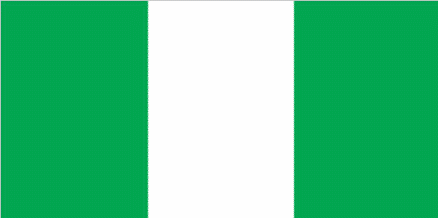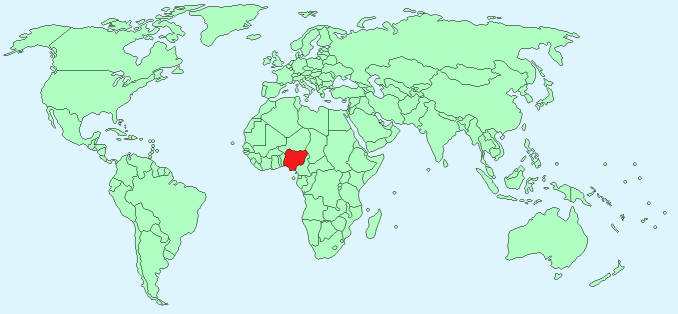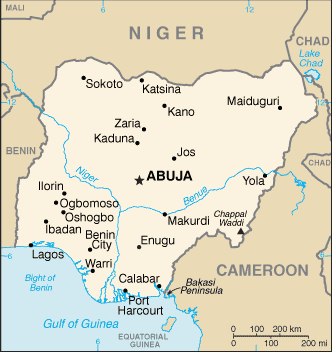Nigeria


Continent – Africa
Region – Western Africa
Size – 923,768 km²
Geography – southern lowlands, central plateau and northern plains, south east mountains
Language – English (official), African dialects
Religion – Muslim 50%, Christian 40%, other religions 10%
Monetary Unit – West African CFA franc
Natural Resources – natural gas, petroleum, tin, iron ore, coal, limestone, niobium, lead, zinc, arable land
Agriculture – cocoa, peanuts, cotton, palm oil, corn, rice, sorghum, millet, cassava (manioc, tapioca), yams, rubber; cattle, sheep, goats, pigs; timber; fish
Industry – crude oil, coal, tin, columbite; rubber products, wood; hides and skins, textiles, cement and other construction materials, food products, footwear, chemicals, fertilizer, printing, ceramics, steel

Neighbouring Countries – Niger, Chad, Cameroon, Benin
Population – 181,562,056 (2015 estimate)
Population Growth Rate – 2.45%
Average Life Expectancy – 53.02
Capital City – Abuja (2,440,000)
Largest City – Lagos (13,123,000)
Highest Mountain – Chappal Waddi (2,419 m)
Longest River – Niger – (total length 4,200 km in Guinea, Mali, Niger, Benin, Nigeria)
Climate – North, tropical – 20°C – 36°C all year, South – 22°C – 33°C
Yearly Rainfall – North 50 cm (approx) mostly June to September, South 400cm mostly March to July
Plant Life – mangrove, palm, abura, mahogany, iroko, African walnut, obeche, grasses
Animal Life – gorilla, chimpanzee, baboon, monkey, crocodile, lizards, snakes, giraffe, hippopotamus, elephant, lion, leopard, gazelle
Bird Life – ostrich, grebe, storm petrels, pelicans, boobies, gannet, cormorant, darter, frigate bird, heron, stork, ibis, spoonbill, terns, ducks, geese, swans, osprey, hawk, falcon, bustard, sandpiper, gulls, parrot, macaw
Harvard Reference for this page:
Heather Y Wheeler. (2015). Nigeria. Available: https://www.naturalhistoryonthenet.com/Facts_Figures/Country_Facts/nigeria.htm. Last accessed Tuesday, July 19, 2016
Facts and Figures Pages
